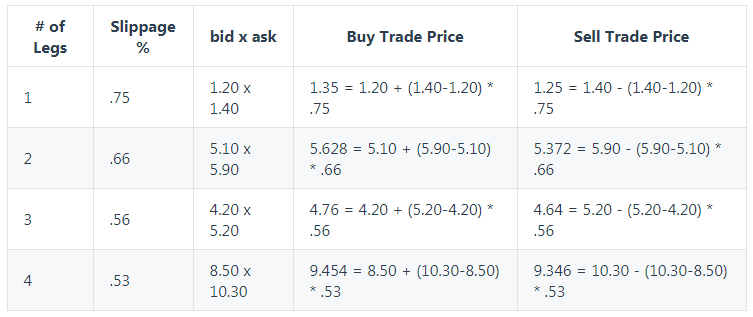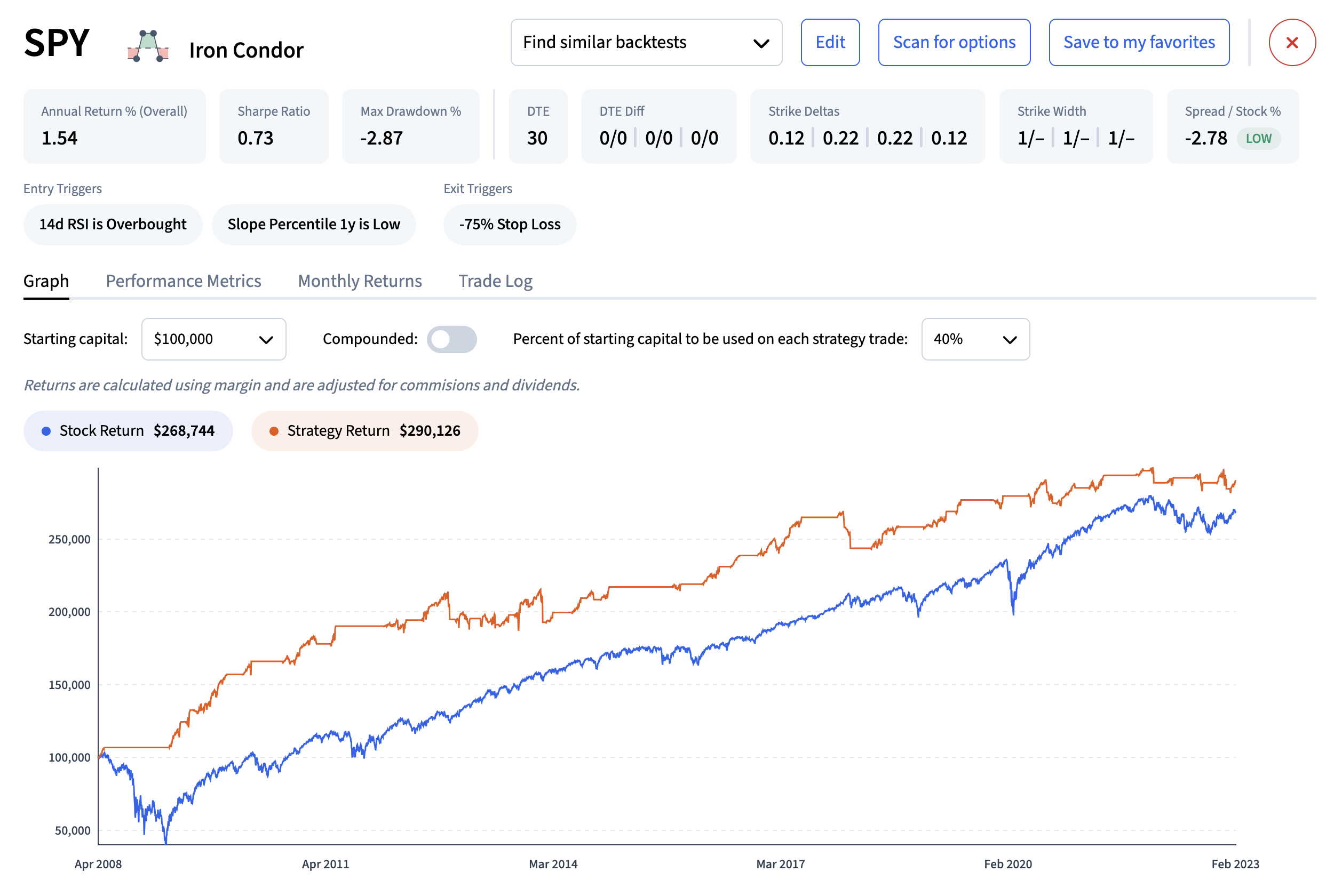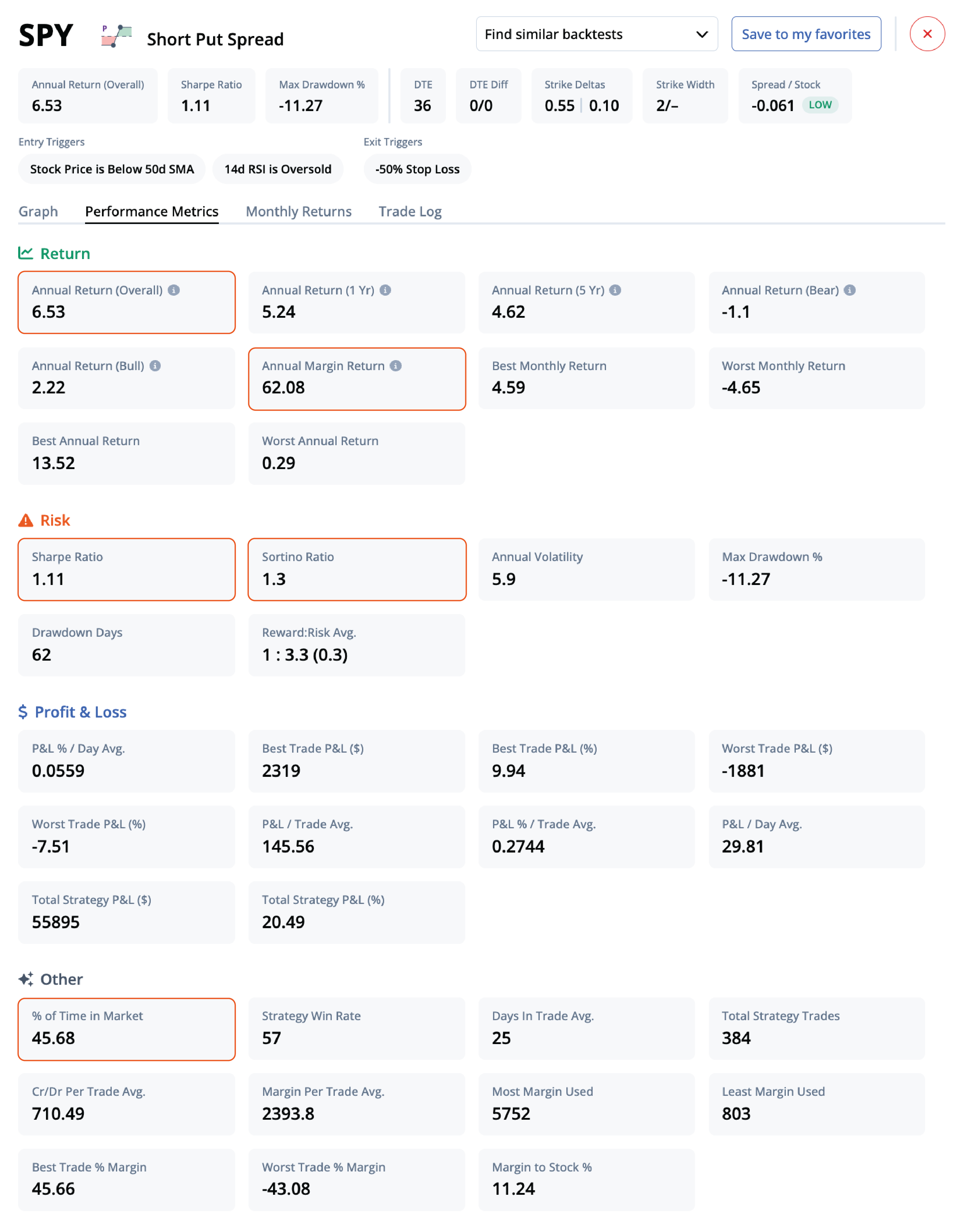Backtesting
Wednesday, August 7th 2019
The Tale of Two Backtests: Why Aren't Opposite Strategies Absolute Returns Equal?
Commission and slippage take a toll on options trading strategies as seen in two opposite call spreads in VXX.
Summary
When backtesting options trading strategies, commission and slippage can significantly impact returns. ORATS Backtester considers these factors, resulting in unequal returns for opposite strategies like long and short call spreads. For example, a long call spread and short call spread with the same expiration and strike selection deltas had returns of -9.23% and 3.51%, respectively, resulting in a combined annual return of -5.72%. The difference was due to an average slippage of $0.10 and commission of $0.02 per trade, resulting in a 5.5% difference in returns. Minimizing slippage and commission is important when trading.
You might think a strategies like short call spreads and long call spreads should have equal and opposite returns given the same trading rules. That would be true except that ORATS considers commission and slippage in our Backtester.
Take these VXX examples: Long call spread and short call spread with the exact same days to expiration and strike selection deltas. Returns are -9.23% for the long and 3.51% for the short. Combining these two using the function in the backtester we get an annual return of -5.72%. Why is that?

Download the trades file for both strategies and see that the average slippage per trade (the absolute value of the trade price of the long - short) is $0.10 and commission is $0.02 for the two leg spread held to expiration. Doing some math: the average days to expiration is 30 so there are 12 trades per year; the average price of the underlying stock is $26 and =(0.12*12)/26 = 5.5% ~ the difference in returns of return of -5.72%.
That is a big difference, something to consider when trading: Try to minimize your slippage and commission. With none of these assumptions, you might expect the returns from a long call spread and short call spread to be equal in absolute value, like the long call spread returning -6.37% annualized and the short makes 6.37%. However, due to commissions and slippage, each strategy does worse by about 2.86%, with the long call spread losing -9.23% and the short call spread making only 3.51%.
We do have fixed slippage as sited in the post: https://docs.orats.io/backtest-api-guide/backtester-methodology.html#slippageFor a 2 leg strategy as here we assume a slippage of 66%, or traveling 66% of the bid-ask spread to trade. This amount is consistent whether buying or selling the call spread.Our entry and exit methodology uses a snapshot of the entire options market 14-minutes before the close each trading day back to 2007. We use actual bid-ask quotes to simulate the trades.

Disclaimer:
The opinions and ideas presented herein are for informational and educational purposes only and should not be construed to represent trading or investment advice tailored to your investment objectives. You should not rely solely on any content herein and we strongly encourage you to discuss any trades or investments with your broker or investment adviser, prior to execution. None of the information contained herein constitutes a recommendation that any particular security, portfolio, transaction, or investment strategy is suitable for any specific person. Option trading and investing involves risk and is not suitable for all investors.
All opinions are based upon information and systems considered reliable, but we do not warrant the completeness or accuracy, and such information should not be relied upon as such. We are under no obligation to update or correct any information herein. All statements and opinions are subject to change without notice.
Past performance is not indicative of future results. We do not, will not and cannot guarantee any specific outcome or profit. All traders and investors must be aware of the real risk of loss in following any strategy or investment discussed herein.
Owners, employees, directors, shareholders, officers, agents or representatives of ORATS may have interests or positions in securities of any company profiled herein. Specifically, such individuals or entities may buy or sell positions, and may or may not follow the information provided herein. Some or all of the positions may have been acquired prior to the publication of such information, and such positions may increase or decrease at any time. Any opinions expressed and/or information are statements of judgment as of the date of publication only.
Day trading, short term trading, options trading, and futures trading are extremely risky undertakings. They generally are not appropriate for someone with limited capital, little or no trading experience, and/ or a low tolerance for risk. Never execute a trade unless you can afford to and are prepared to lose your entire investment. In addition, certain trades may result in a loss greater than your entire investment. Always perform your own due diligence and, as appropriate, make informed decisions with the help of a licensed financial professional.
Commissions, fees and other costs associated with investing or trading may vary from broker to broker. All investors and traders are advised to speak with their stock broker or investment adviser about these costs. Be aware that certain trades that may be profitable for some may not be profitable for others, after taking into account these costs. In certain markets, investors and traders may not always be able to buy or sell a position at the price discussed, and consequently not be able to take advantage of certain trades discussed herein.
Be sure to read the OCCs Characteristics and Risks of Standardized Options to learn more about options trading.
Related Posts



